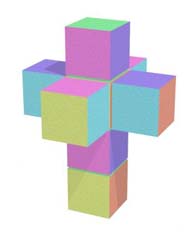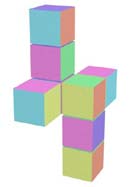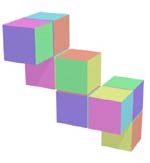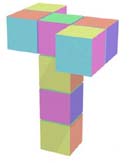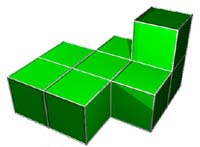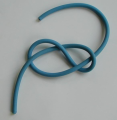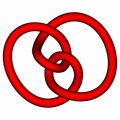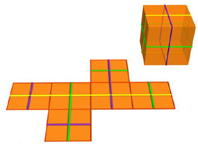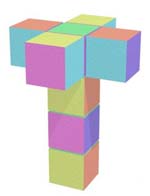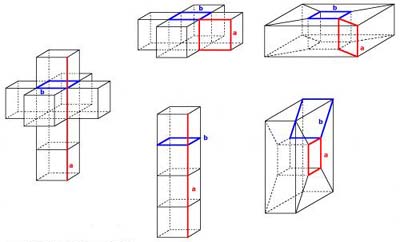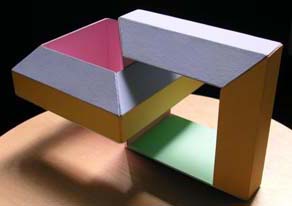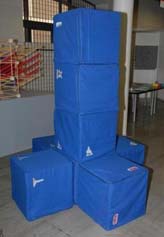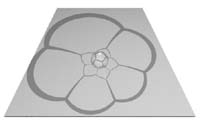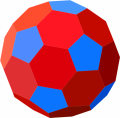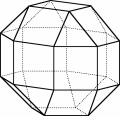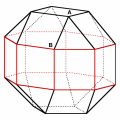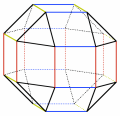When we point to a picture like this and say that it is a hypercube, we are leaving out something important. To discover the properties of a hypercube, we must clarify what it is that we have left out. In fact, the picture is not that of a hypercube, which is a four-dimensional object, but that of a net of a hypercube, which is a three-dimensional object (and the picture, of course, is only a two-dimensional representation of that three-dimensional object). This three-dimensional net is related to the real four-dimensional object in the same way that this plane surface consisting of six squares is related to a cube.
The plane surface becomes a cube when the faces are folded out of the plane and the boundary edges are identified two by two. In a similar way, we can decide which edges of the net are to be identified.
The eight cubes of the net fold into a hypercube when certain boundary faces are identified and glued together two by two. This time too, we can decide which squares in the net may be identified.
Of course, not all arrangements of eight cubes (octacubes) are nets of a hypercube (just as not all figures composed of six squares form the net of a cube). For instance, this is not a net of a hypercube. The problem is that there are there four cubes adjacent to the same edge. It is similar to the analogous situation of placing four squares adjacent to a vertex in the plane in trying to form the net of a cube. Even if we could leave the plane and move into three-dimensional space, we could not fold the figure into a cube because we would be prevented from doing so by that vertex.
There are 11 nets of a cube altogether and there are 261 nets of a hypercube. This video shows some of these 261 nets. They are obtained from one another by allowing the cubes to roll along the octacube in analogy to how we could obtain the 11 nets of a cube by removing one square and gluing it somewhere else (at a valid place, of course). An interactive animation shows all the nets. If you click on a face of a net, the octacube changes; a part comes off and is glued back along the square that has been clicked. Note that you should not click on just any face, but only on a square that is adjacent to an edge where three cubes come together. You can detect the clickable squares by the fact that they light up when they are selected. Another animation proposes to compare a fixed net and other five ones: you must recognize the fixed one among the others. It is not at all a trivial task!
How do we know that there are 11 nets of a cube and 261 nets of a hypercube? And in general, how can we discover all the nets of a given polyhedron or polytope (a polytope is the generalization of a three-dimensional polyhedron to other dimensions)? The answer to the first question is easy. You can obtain them “by hand” by examining all possible figures made up of six squares. The answer to the second question is more complicated, but in principle can be worked out in the same way as the first question. The answer to the third question is more surprising even in three-dimensional space, never mind bothering about four dimensions. If you enjoyed finding out that there are 11 nets of a cube, you can easily discover the two nets of a regular tetrahedron, and with a little effort, the eleven nets of a regular octahedron . On the other hand, you will be in for a lot of work if you try to count all possible nets of a dodecahedron or a icosahedron by hand. In both cases, there are 43380 of them.
